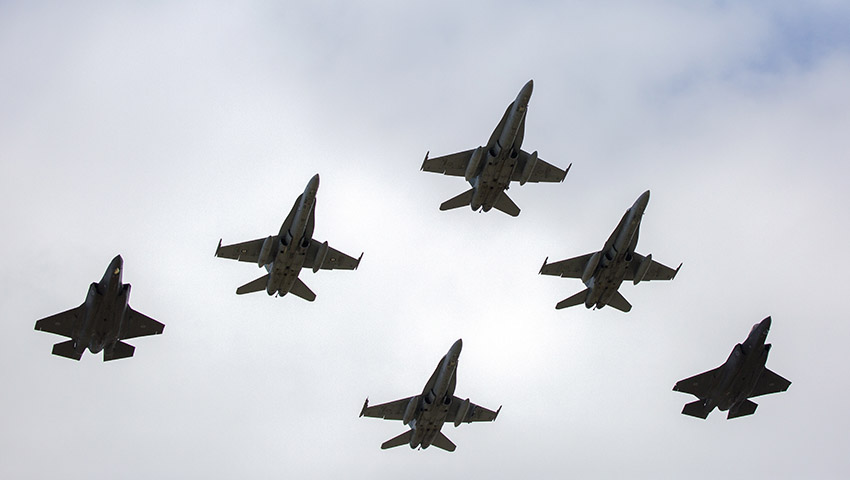Pilots from the Royal Australian Air Force’s Number 2 Operational Conversion Unit (2OCU) have conducted their final flight in the Classic F/A-19A/B Hornet as the unit transitions to the support of the F-35A Joint Strike Fighter.
To continue reading the rest of this article, please log in.
Create free account to get unlimited news articles and more!
The historic flight acknowledges the conclusion of Classic Hornet pilot conversion training, marking the end of an era. The aircraft will fly along coastal communities of the unit’s hometown of RAAF Base Williamtown, north over Tomaree to Sugarloaf Point coastal areas, up the Port and south to Redhead Beach.
Commanding Officer 2OCU, Wing Commander Scott Woodland, said that 2OCU’s final Classic Hornet mission is a fitting tribute to this significant milestone in Air Force history.
"2OCU's critical role in preparing generations of Classic Hornet fighter aircrew with the skills and competency to engage in fighter combat has laid the very foundations of RAAF Air Power capability since the introduction of the platform in 1985," WGCDR Woodland said.
"Operational conversion has been at the cornerstone of the strength of the Classic Hornet platform’s contribution – taking graduate Hawk 127 Lead-in Fighter pilots and testing and challenging them under the most gruelling of conditions and toughest air combat scenarios."
The future of fast-jet aircrew training at 2OCU is now focused on supporting fifth-generation capabilities, with the arrival and operational sustainment of the F-35A Lightning II.
WGCDR Woodland said, "We welcome the commencement of the next phase of pilot conversion training for the F-35A. This represents a fundamental shift for 2OCU; one which we are fully equipped and ready to continue to deliver a superior war-fighting capability – supported by highly professional, highly skilled aircrew – performing with strength and focus when called upon by government."
The RAAF F/A-18A/B Classic Hornet platform is planned to be withdrawn from service in December 2021, with the RAAF’s fleet of Classic Hornets currently being replaced by the F-35A Lighting II.
The Lockheed Martin F-35 Joint Strike Fighter is billed as a catalyst for the fifth-generation revolution, changing the face and capability of the RAAF and the wider Australian Defence Force.
For the RAAF, the F-35A's combination of full-spectrum, low-observable stealth coatings and materials, advanced radar-dispersing shaping, network-centric sensor and communications suites – combined with a lethal strike capability – means the aircraft will be the ultimate force multiplying, air-combat platform.
The F-35A – the variant chosen by the RAAF – will have with a projected life of 30 years in service.
More than 340 F-35s are operating today with partner nations, more than 700 pilots and 6,500 maintainers have been trained, and the F-35 fleet has surpassed more than 170,000 cumulative flight hours.
Over the coming years, Australia will purchase 72 of the advanced fifth-generation fighter aircraft as part of the $17 billion AIR 6000 Phase 2A/B program – which is aimed at replacing the ageing F/A-18A/B Classic Hornets that have been in service with the RAAF since 1985.

 Login
Login







